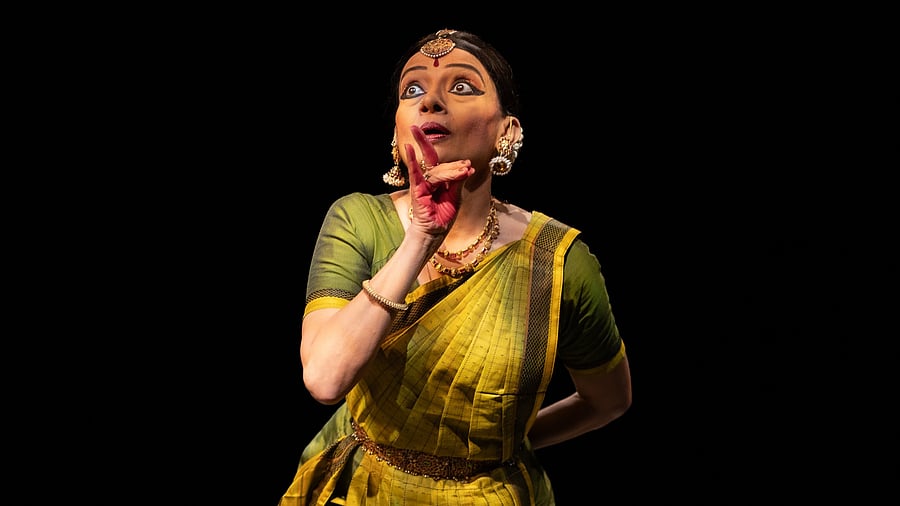
Malavika Sarukkai
Credit: Special Arrangement
Renowned Bharatanatyam dancer Malavika Sarukkai continues to blaze a trail with thought-provoking productions in the dance firmament, making her a legendary artist whose distinctive and meditative performances continue to impact generations of dancers and dance enthusiasts. Her collaborative productions have synergised dialogues with poets, musicians, painters, art historians, and contemporary writers. She has performed at major festivals in India and abroad. A personal and searching film, The Unseen Sequence, directed by Sumantra Ghosal, premiered at The Lincoln Center’s Dance on Camera festival and received rave reviews. Her exceptional artistry has been filmed by NFDC, the BBC, German TV, and the French Arte Channel, among others.
Her choreographies ‘Shiti Gati’ and ‘Krishna Nee’ have been included in the core repertoire of the Juilliard Creative Classroom Resources in New York. More recently, she contributed to the Oral History program at the Dance Division of the New York Public Library. The danseuse has received many awards and accolades. Among them are the Padmashri from the President of India in 2003, the Central Sangeet Natak Akademi Award in 2002, and the Kalaimamani from the Government of Tamil Nadu in 1994.
In a freewheeling conversation with DHoS, Malavika Sarukkai spoke about her recent production, Beeja-Earth Seed, which has been conceptualised and choreographed by her. This production is a dance commentary on planet Earth and was recently presented at the Chowdiah Memorial Hall in Bengaluru to a packed house. The production also premiered an ‘ambisonic soundscape’, the first ever in classical dance from an Indian production. Excerpts
Tell us about your latest solo and group choreographies.
I wish to reveal the incandescent beauty of the classical language of Bharatanatyam and the energised articulation of a contemporary mind through my choreographies. I wish to embody originality, intelligence, mastery of technique, and a vitalised movement vocabulary to inventively relate the world of dance to the world around us.
Beeja-Earth Seed is conceived as both an affirmation of the beauty and generosity of planet Earth and a wake-up call to humanity. Beeja, the seed, draws our attention to the potential within the Earth, suspended as it is in the universe. The narrative of Beeja-Earth Seed recognises the subaltern voices of the planet — the tree, the bird, the swan, the deer. As the storyline unfolds, it cautions us to reflect on the footprint humanity is leaving on this, our only known and living planet. Darkness takes over when human avarice knows no bounds is the message.
My group choreographies include Vamatara-To The Light, based on Pichwai paintings, the abstract concept of Thari-The Loom, inspired by the handloom weavers of India, The Battle Within, which is a creative retelling in dance of one of India’s most revered texts, The Bhagvad Gita, where Arjuna, the warrior, faces an existential crisis as he converses with Krishna, and Anubandh-Connectedness, a contemporary comment on our lives, which looks at the complex web of the human condition.
What are the obstacles you overcame to present a thematic production of this kind? How did you navigate through them?
Creating a dance production with a theme that is out-of-the-box like Beeja-Earth Seed involves many aspects — a thirst to create, the ability to translate the concept into dance, cerebration, creative detailing, command over technique, a creative team that aims for excellence and willing to sustain collaboration over many months and financial support to create an excellent production.
Is it necessary to fuse classical dance with other styles such as ballet, or infuse theatrical elements to make the production ‘unique’?
Bharatanatyam is a language of dance that holds immense potential for imaginative exploration while keeping the core principles in place. It is the artist’s responsibility to think deeply and innovatively to create work that is embodied and has gravitas.
How important is teamwork when you conceptualise a thematic production on this scale?
Teamwork is paramount when aiming for excellence in production values. It is important to find the right collaborators who are on the same wavelength and who strive for distinction. The main collaborators of Beeja-Earth Seed — Sumantra Ghosal, music producer Sai Shravanam, composer Niranjan Gokhale and numerous others have contributed greatly to the overall feel and ethos of this production.